The Long-Time Windsor Star Editorial
Cartoonist Donates A Trove of His Work
to The University of Windsor
Story by Matthew St. Amand
Photography by John Liviero
The year was 1980. That summer Terry Fox embarked on his Marathon of Hope. The Nova Scotia rock band, April Wine, released its song “I Like to Rock,” which reached #86 on the Canadian Hot 100. Bob and Doug McKenzie first appeared on the Canadian comedy show SCTV. And newly minted editorial cartoonist, Mike Graston, began work at the Windsor Star, where he chronicled life in the city, province, country and the world, five days a week nearly every week of the year for thirty-six years.
“After graduating university, I moved to Ottawa,” Mike explains. He studied history at the University of Western Ontario in London and contributed a recurring comic strip called “Buddy” to the student newspaper. “The Ottawa Citizen hired me to do the Monday editorial cartoon, as well as work as a copy person. It was kind of a ‘gofer’ job in the newsroom, but it gave me experience. They had a full-time cartoonist. When he went on holiday, I went into his office and did the cartoons.”
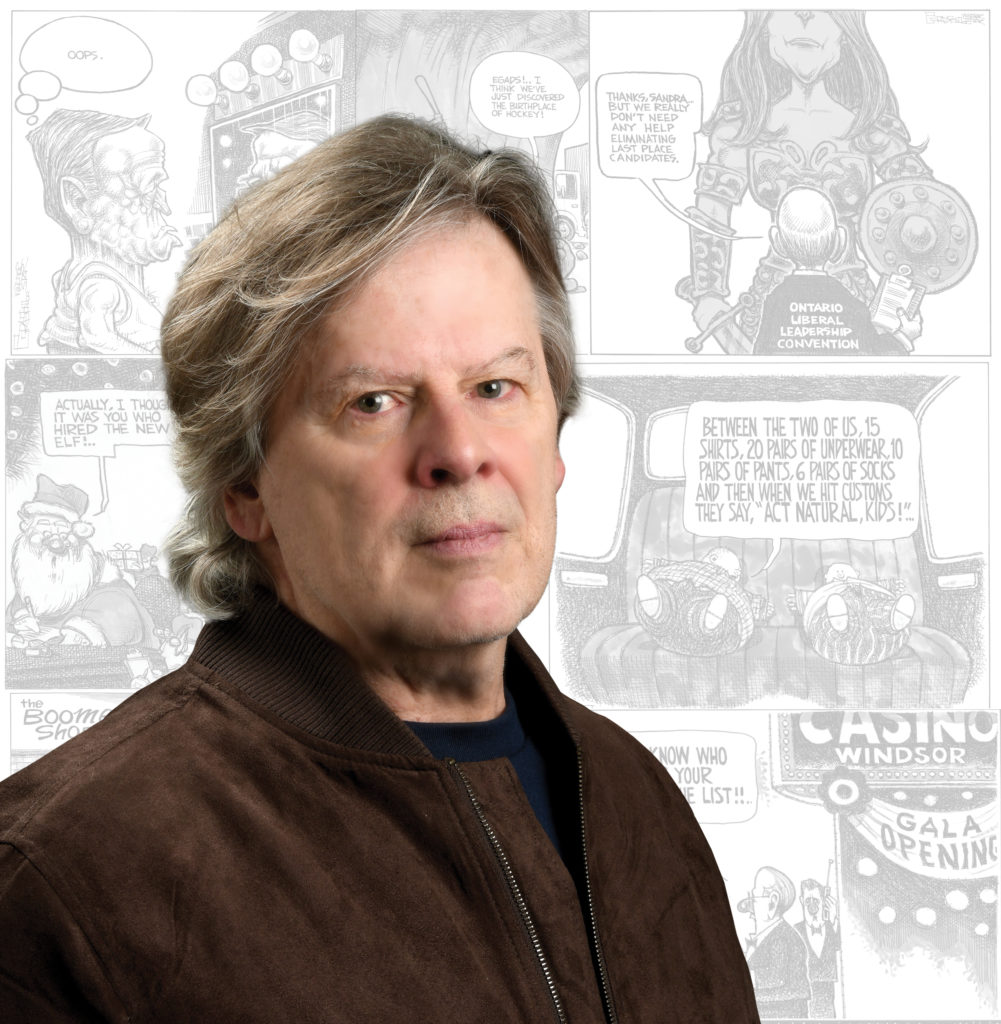
The Ottawa Citizen also had Mike create illustrations on a freelance basis to accompany stories.
“That didn’t work for me,” he remembers. “I wanted to create work where I signed my name, where it was my own idea.”
He continues: “At the Citizen, I saw how editors talked to the full-time cartoonist—if they didn’t like something he did, they suggested ways to ‘improve’ it, and I thought: ‘Uh oh, I didn’t want any part of that!’”
When they attempted this with Mike, he said it was easier to just come up with a new idea.
When he came to work at The Windsor Star, it soon became known “Don’t try and give Graston any ideas for cartoons!” It was also there that Mike learned, firsthand, the pressure of a daily deadline.
“It took a while getting used to that,” he recalls. “There was a lot of hard work in the beginning.”
The hard work was balanced by the immensity of the canvas on which he had to work.
“I remember thinking: ‘This is my opportunity. I have my own city.’ I’d never been to a city that took its local politics so seriously.”
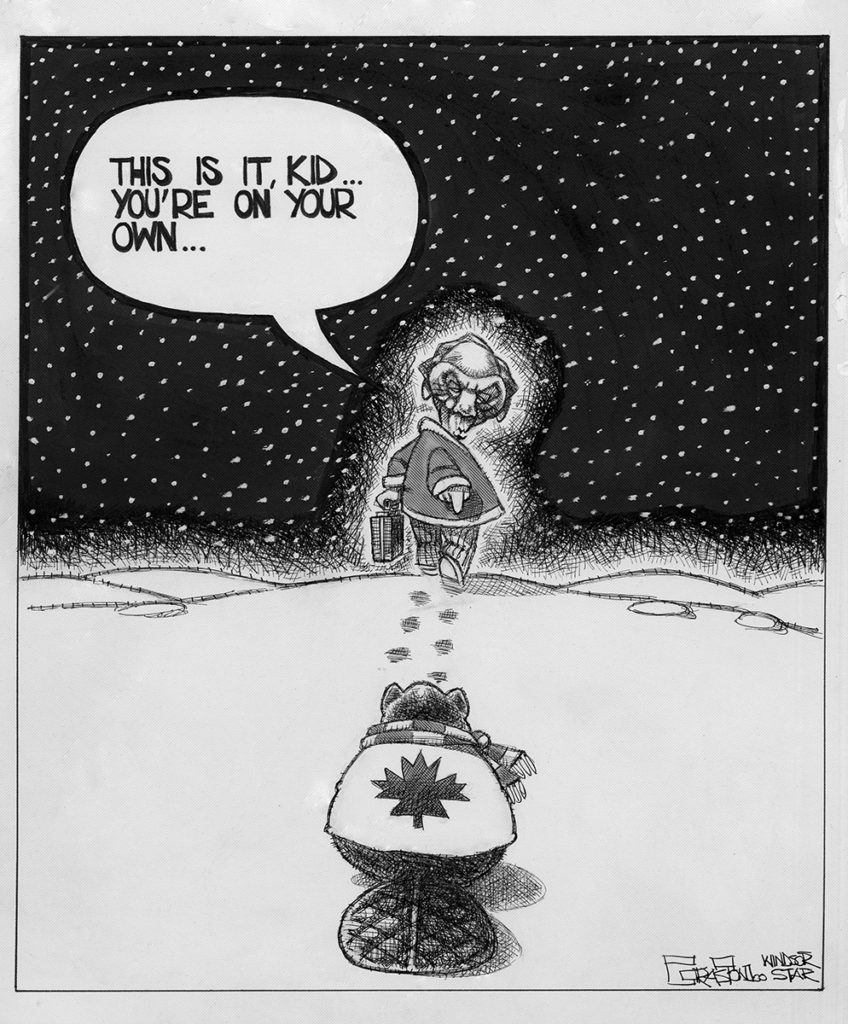
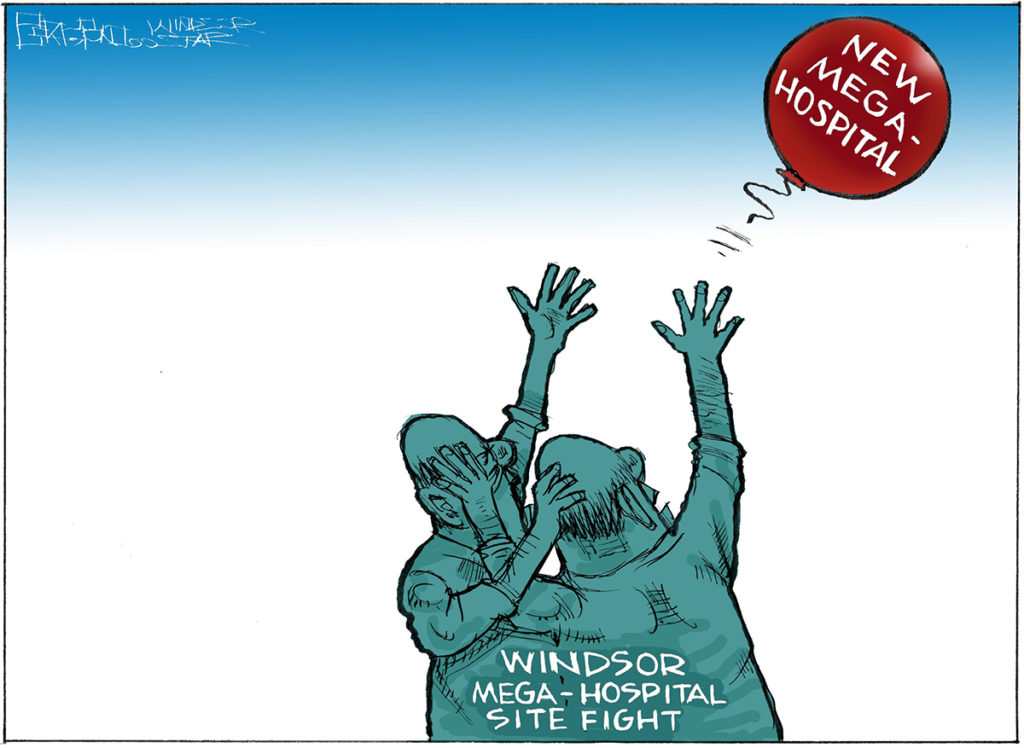

There was no end of feathers to ruffle, hats to twist, or noses to put out of joint. It wasn’t Mike’s immediate goal to do such things, they were simply a by-product of him doing his job correctly. His work evoked a range of emotions. Although Mike was known for his incisive humour, he also created poignant images that dealt with the 9/11 attacks as well as the shootings at the Sandy Hook Elementary School in Newtown, Connecticut and at the Charlie Hebdo satirical news magazine in France.
“The editorial cartoon is essentially a column, but in a graphic form,” Mike explains. “I knew some things would be controversial, but that’s the nature of my job.” He pauses and smiles: “I got away with stuff, here, that a lot of cartoonists in the country were jealous about.”
It’s worth noting that in the early 1980s, there were approximately twenty-five editorial cartoonists in all of Canada. The only other occupation with a more rarified population was “astronaut.”
Over the years, more than the daily readers of the Star took notice of Mike’s work. His cartoons have appeared in publications internationally, and exhibited at the Smithsonian Institution in Washington, D.C. In 2003, the Art Gallery of Windsor showed numerous pieces of his work in a twenty-year retrospective. Mike also contributed a selection of work to the National Archives of Canada.
Most recently, in the autumn of 2022, he donated more than 2,600 of his editorial cartoons to the University of Windsor.
The process began in 2011 following a conversation with Windsor politician, Sandra Pupatello. Mike liked the idea of donating his work, being in the rare and enviable position where he retains the copyright to it. Sandra put him in contact with then-president of the University of Windsor, Alan Wildeman, and the process moved on from there.
“Every local cartoon I have done is at the University of Windsor,” Mike explains. “I feel privileged to have the opportunity to create them, and to have the work stored where people can access it.”
One surprising admission Mike makes about the donation: “I destroyed some cartoons. Not because of the topics, but based on artistic quality, delivery. Sometimes we have a bad day. There weren’t a lot of bombs.”
Regarding Mike’s donation, University Librarian Dr. Selinda Berg says: “It has brought to the fore the role that the library plays in capturing local history and being able to preserve that and we steward it through time and that it’s accessible.”
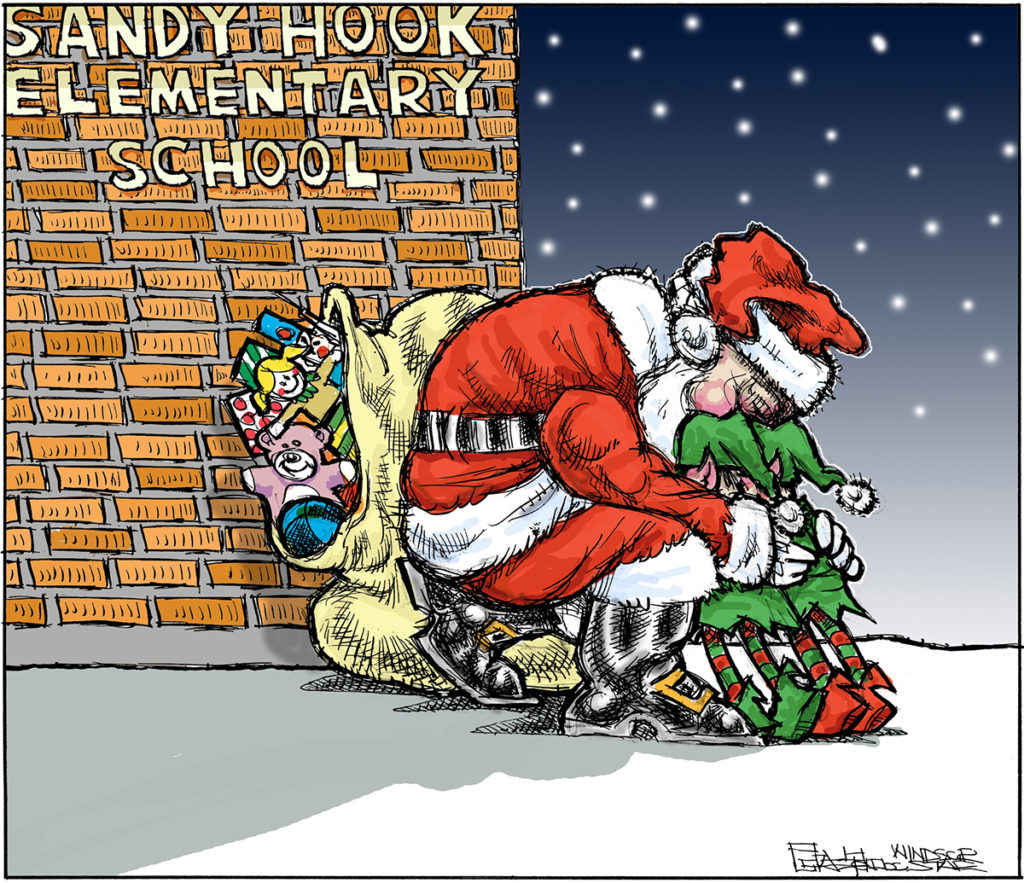

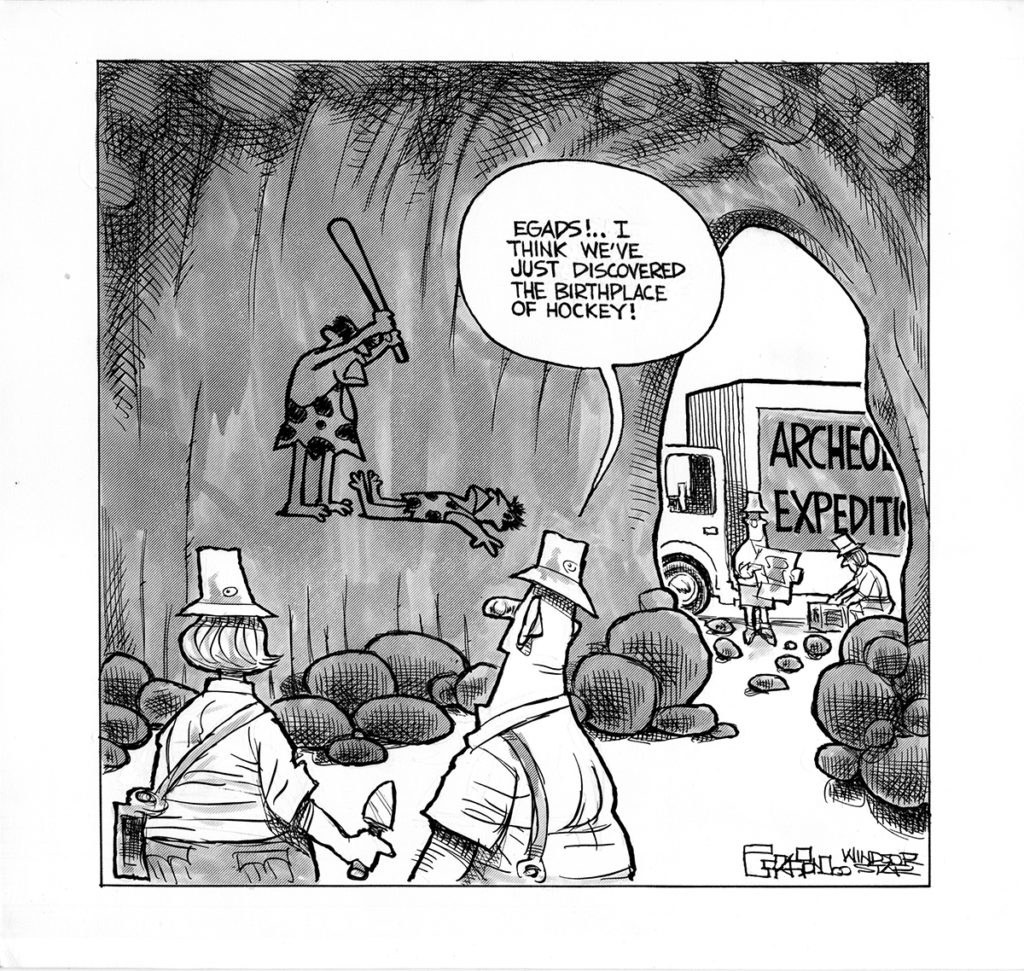
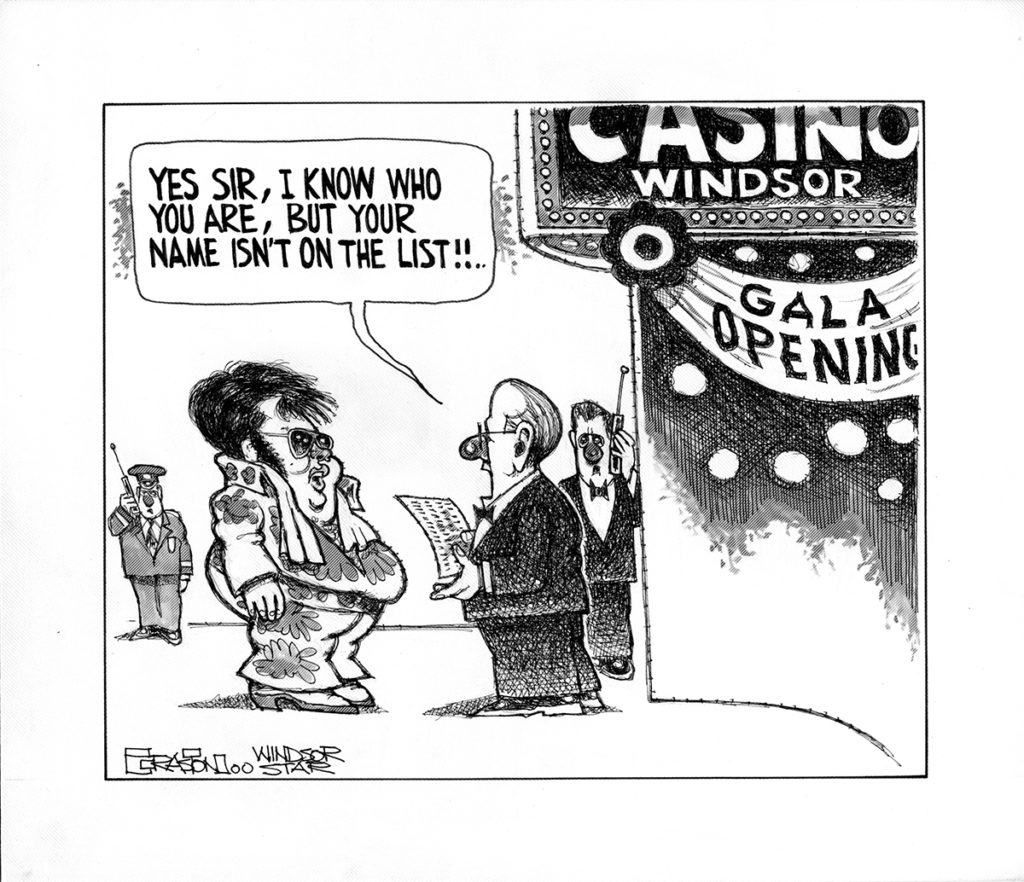
“Topic-wise, the cartoons deal with political and economic and social change,” says Dr. Sarah Glassford who manages the Archives & Special Collections. “This collection has much to offer students and scholars in history and political science, even technology—the effect of smart phones on our culture, for instance—as well as local history, of course.”
The collection consists, predominantly, of physical cartoons Mike created for the Star, but there are many that were “born digital”—created on a computer using an electronic tablet.
“What I love about the physical originals,” Sarah says, “is that you can see where he might have smudged… it all stayed. I love that evidence of human interaction.”
“I wanted [the collection] to go somewhere that really wanted it,” Mike says about the donation. “This university is in the city I worked in. It did belong here… I wouldn’t want it anywhere else.”
High resolution scans have been made of the physical copies of Mike’s work, and are available for the public to view. As with all special collections pieces, they cannot be checked out of the Leddy Library. Those interested in seeing the work are encouraged to make an appointment by contacting the university’s Archives & Special Collections: archive@uwindsor.ca, 519-253-3000 ext. 3851, Leddy Library (Main Building) basement, suite G-100.


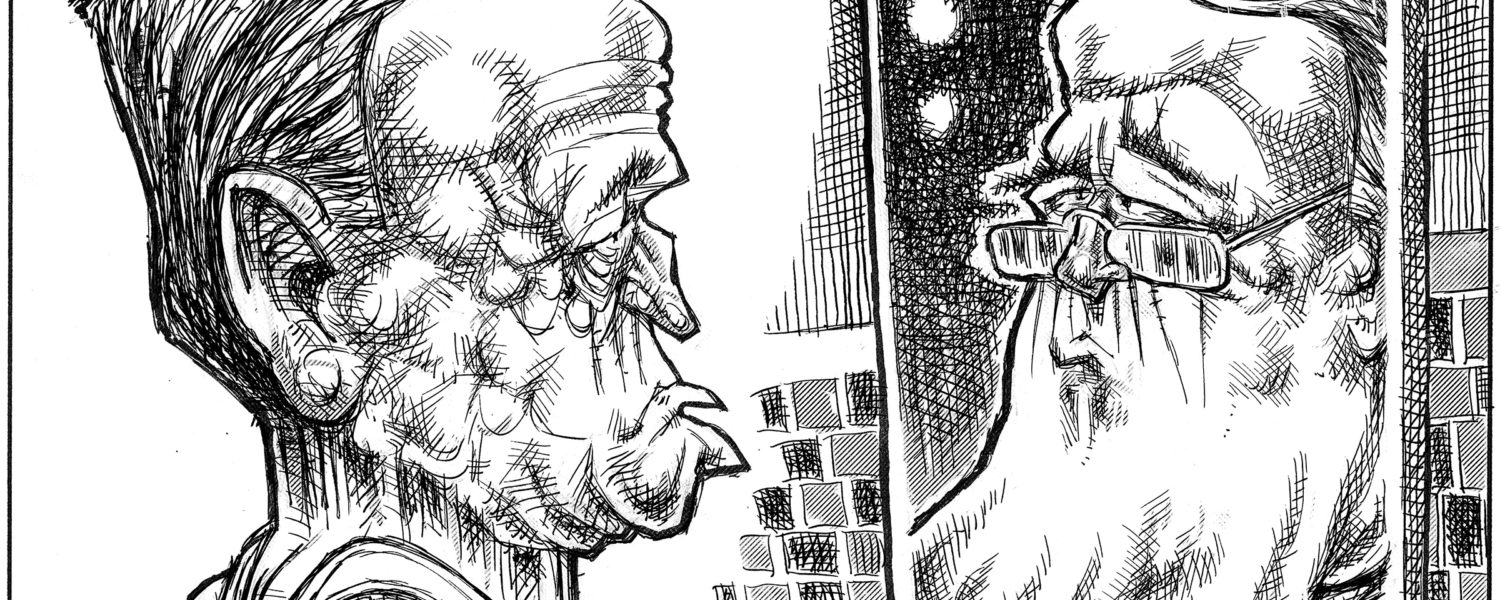

Mike,
I love your work. I think we need to get together and talk about our careers. Lot of similarity. I’m a Windsor native who wound up with a forty year stint at the Cincinnati Enquirer and Cincinnati CityBeat, doing editorial and sports cartoons. I’ve been retired for years, but still freelance.